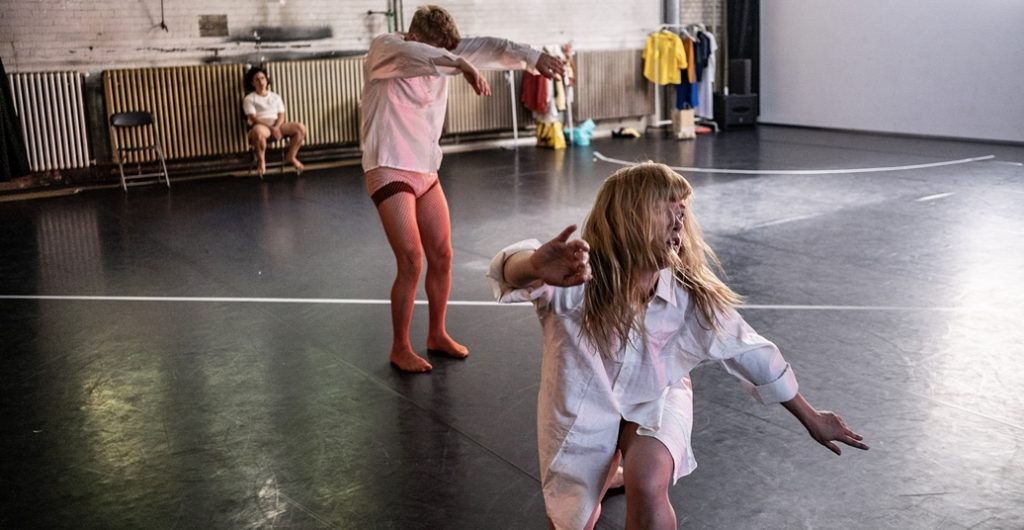I meet deufert&plischke in their shared apartment. Not by chance is there a framed tarantula on the wall: Arachne, mythological figure of weaving and heroine of story-telling. In “Liebestod” love stories are woven into music and dance.
The text material for the piece comes from personal stories. How did you find them?
We organised 9 open workshops in Berlin and Dresden, and very different people participated – different ages, backgrounds or desires. We were particularly interested in so-called ‘love fuck-ups’, failed relationships, in which people weren’t just victims but actively made something impossible. The first one brought young people together who were new in the city – full of hope that ‘everything was possible’ in Berlin. We also initiated a ‘love group’ in an old people’s home in Wedding. We were met with a lot of openness and trust. Sometimes the workshop participants could talk about things they hadn’t even told their best friend. For us it was important to allow silence, but also to bring in humour and levity.

How are these stories dealt with on stage?
The audience can expect a ‘classical’ performance situation once again. We filtered out 11–15 stories from a pool of about 80, and the musicians Rasha Nahas and Alain Franco composed songs from them. Solos, duos, trios and group scenes were developed with the dancers Martin Hansen, Roni Katz, Kareth Schaffer, Shade Theret and Anna Posch. It was important to us to stay close to the stories.
How do these stories relate to the ‘big’ dramatic narratives?
The title “Liebestod” refers to Tristan and Isolde, of course. We made a conscious decision to leave out the ‘big fictions’, so as to look for their traces in mundane everyday life – ‘finding the myths on the street’, as we say. These stories don’t have very much in common with the heroic narratives, although motifs like hate, disgust and war come up even here.

What does this piece mean to you as a couple and artist twin?
It’s in fact our most emotional work to date. Also in the decision to make a physical piece for the stage, in which you can’t hide so much behind a conceptual abstraction. We’ve perhaps become even more aware of the connection between art and love, even though it was always there. People are always saying ‘Let’s talk about sex’, but perhaps its time for ‘Let’s talk about love’.
English translation by Michael Turnbull
A Co-operation between Tanzbüro Berlin and Tanz im August 2019
Our tanzschreiber authors Alexandra Hennig, Beatrix Joyce and David Pallant were invited to interview the Tanz im August 2019 artists Nora Chipaumire, deufert&plischke, Nicola Gunn, Gunilla Heilborn and Claire Vivianne Sobottke. All interviews will be published on www.tanzschreiber.de and www.tanzimaugust.de/magazin.




